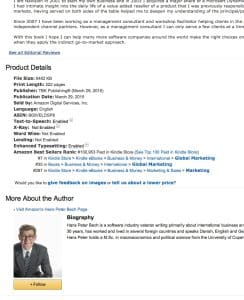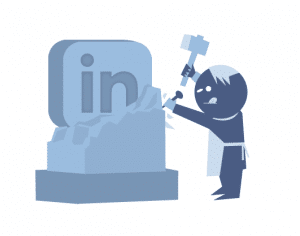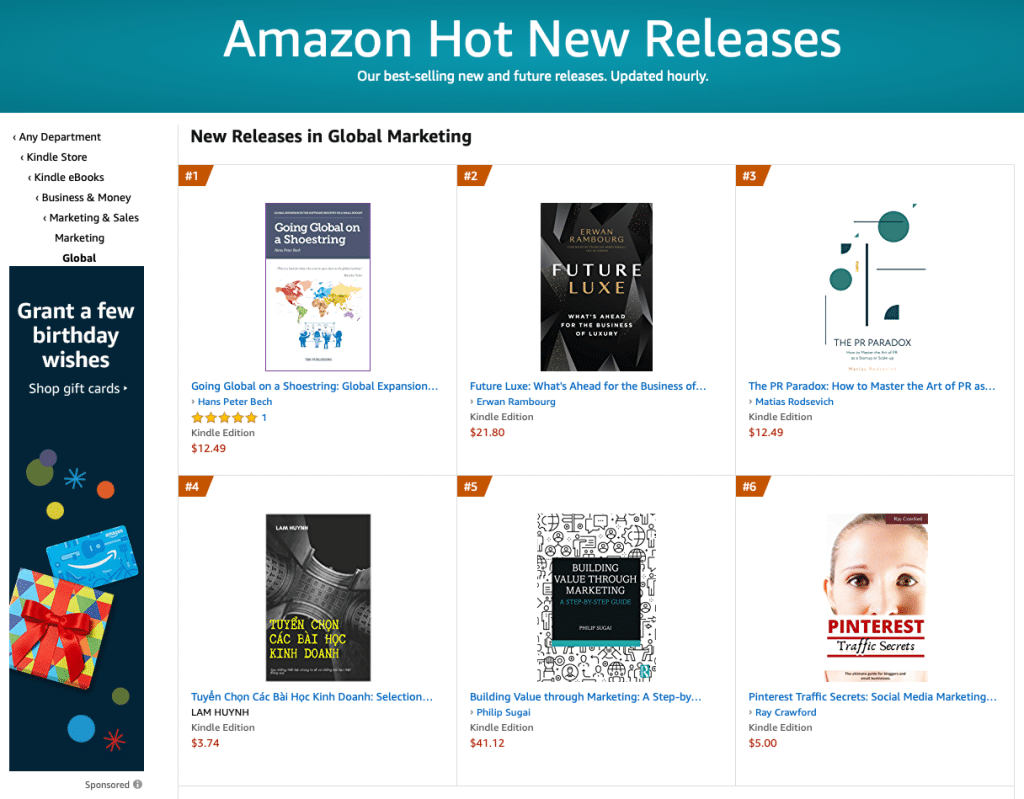This is the eighth article in a series on how I produce international bestsellers. This time I will discuss how to get the book to the top of the bestseller list.
Links to the first seven articles:
- Article 1: How to make an international bestseller
- Article 2: The four main activities in producing a bestseller
- Article 3: Idea and creation
- Article 4: Production
- Article 5: Distribution
- Article 6: Marketing 1
- Article 7: Marketing 2
The printed version of Building Successful Partner Channels is currently number 14 in the categories Global Marketing and Industrial Marketing. The Kindle version is number 47 in Global Marketing, and the audio version is number 12 in Global Marketing. Both the printed and the Kindle versions have been number one in Global Marketing.
Success requires careful planning

In the months leading up to the release of the book, I will make a list of 1,000 potential readers. When just half of them buy the book simultaneously or within a few days, you can hardly avoid going all the way to the top in your category.
On Amazon (and everywhere else), your books are published within specific categories. The categories I use do not compete with either Barack Obama or Harry Potter. If they did, I would hardly stand a chance.
Not many books are published in the categories of Global Marketing, Industrial Marketing, International Business and Small Business & Entrepreneurship. Due to the niche character of the categories, sales are generally very modest. If you sell 500 to 1,000 copies in a week, your book can reach the top.
How do you find 1,000 potential readers?

A few months before the release date, I start writing to those of my LinkedIn connections who have characteristics that fit with the book’s topic. To identify those people, I use the search functions in LinkedIn’s Sales Navigator, which offers more filters than the free subscription.
In the message, I offer a free copy of the Kindle edition or a copy of the printed edition with an introductory discount.
My message is brief and concise and does not contain links. It can be read in a split second, and if a recipient wants to know more, I can always send a link to the product page.
I now ask those who respond, which is about half, to sign up to a mailing list. I use Mailerlite for that purpose, where I have designed a specific landing page connected to their email submission service.
I use double opt-in. This means respondents will be asked to confirm their email addresses.
I deliberately add several small obstacles to the process. I only want seriously interested readers on the list; otherwise, the final conversion rate will be too low.
I send 200 messages daily using Dux-Soup, and when the list consists of 1,000 people, I stop sending messages.
After the book is uploaded to Amazon, I sign up for the KDP Select program, which allows me to offer the Kindle version for free for up to a week at no cost to me. The printed version is set at about 75% of the normal price.
On the release date, I notify the 1,000 people on the list, informing them that they must complete the purchase within three days if they want to use the offer.
About 80% do, after which the book rises to the top in its category.

After the offer period expires, the price is raised to the regular price.
If the book is good, it will continue to sell and pass the 5,000 copies that generally characterize a bestseller. With my method, you will soon be able to announce that the book is in first place.
Is it vanity considerations? No, it’s a marketing trick.
Most readers prefer to read books that others also buy or have bought. A bestselling book on the sales list will automatically sell more copies in the huge selection of options.
That is just how it is.
Stir the pot
As mentioned earlier, marketing starts many months before the release date, but intensifies in the last three months.
I use five social media channels:
- My personal LinkedIn profile
- TBK Consult’s LinkedIn company page
- TBK Consult’s Facebook company page
- TBK Publishing’s Facebook company page
- My personal Twitter account
Via Buffer I post, as mentioned earlier, twice daily on all channels. Most of my activities on social media during this period are centred around the book, where excerpts and summaries are posted.
I can see that the activities drive traffic to the book’s landing page, from which some choose to sign up for the list.
I want to make an observation regarding social media.
When you post content that is not directly controversial and does not target a broad audience, do not expect it to go viral. When only a few respond, social media sharing algorithms will ensure it doesn’t spread further. But even exposure to a few hundred or thousand people can have value. If you post frequently, attention will accumulate.
Your goal should not be to get likes, comments, or shares. Your goal should be to sell books. If you sell books every day, then your marketing works.
Keep stirring the pot
When the book is published, I receive invitations to participate in webinars and podcasts. As long as my contributions can have the books as a starting point, I am most often willing to participate.
Before the recordings, I send a list of questions that I suggest the interviewer asks. These are questions whose answers I know are relevant to my target audience. Then I prepare my answers to ensure that we stay on topic and that we stay within the agreed time frame.
The interviewers are responsible for marketing their broadcasts, but, of course, I am also very diligent to share the content on my channels both before and after it has taken place.
In addition, I continue to write about the book’s topic for many months and include links to its page on our website or directly to Amazon or Tales.
Search Engine Optimization (SEO)
Book sales benefit from what author Chris Anderson calls The Long Tail. However, only when potential readers can find your books can they buy them.
To ensure that your books are exposed to the target audience, you must have one or more active forms of representation on the Internet. Also, be aware of what keywords or phrases your potential readers use when searching for some of the topics your books are about.

The most obvious representation is a website, but you can also choose a page on Facebook, LinkedIn, Twitter, Instagram, Pinterest, or another place where many of your potential readers are active. As mentioned earlier, I have three websites, a LinkedIn profile, a company page and two Facebook pages. In fact, I have four Facebook pages since the book From Damgaard to Microsoft has its own page. I also have my personal Facebook profile, but do not use this for marketing purposes.
Being found when potential readers search for what you write requires that you leave as big a digital footprint as possible.
In 2007 I started blogging (writing articles), and over time I have published more than 200 articles in Danish and over 1,000 in English. That is why I am pretty high on the search engine results pages for many key terms I write about. As a result, I have around 5,000 unique visitors per month to my websites and social media profiles. On the websites, they read almost four pages each on average and stay for about a minute. The bounce rate, that is the visits that leave immediately, is below one per cent.
Achieving that type of outcome is a function of, on the one hand, the production of content (articles, videos, podcasts, illustrations, and texts) that readers find valuable, and, on the other hand, the use of the technical tools that help search engines understand what your content is about.
I have chosen Yoast to help me with the technical aspect and have participated in some of their online courses. My three websites have Yoast Pro as an SEO tool, which makes the work easier, but also serves as a nice check list of the things to remember every time an article is prepared for publication.
In the next article, I will discuss the financial aspects of indie publishing.
